While the #vanlife movement has captured the imagination of many seeking freedom and adventure on the road, a quieter revolution is happening in the world of tiny travel trailers, particularly with brands like Casita. It might not have the same viral hashtag appeal, but for those in the know, “travel trailer life,” especially with a Casita, offers a compelling blend of practicality, comfort, and charm. Six years ago, drawn by affordability, towability, and promising reviews, I took a leap and purchased a used 1991 Casita Spirit Deluxe sight unseen. Despite its vintage quirks, those three years cemented my belief in the superiority of travel trailers, and Casita in particular, for nomadic living. Their durability, stable market value, ideal size and weight, functionality, and undeniable cuteness make them stand out.
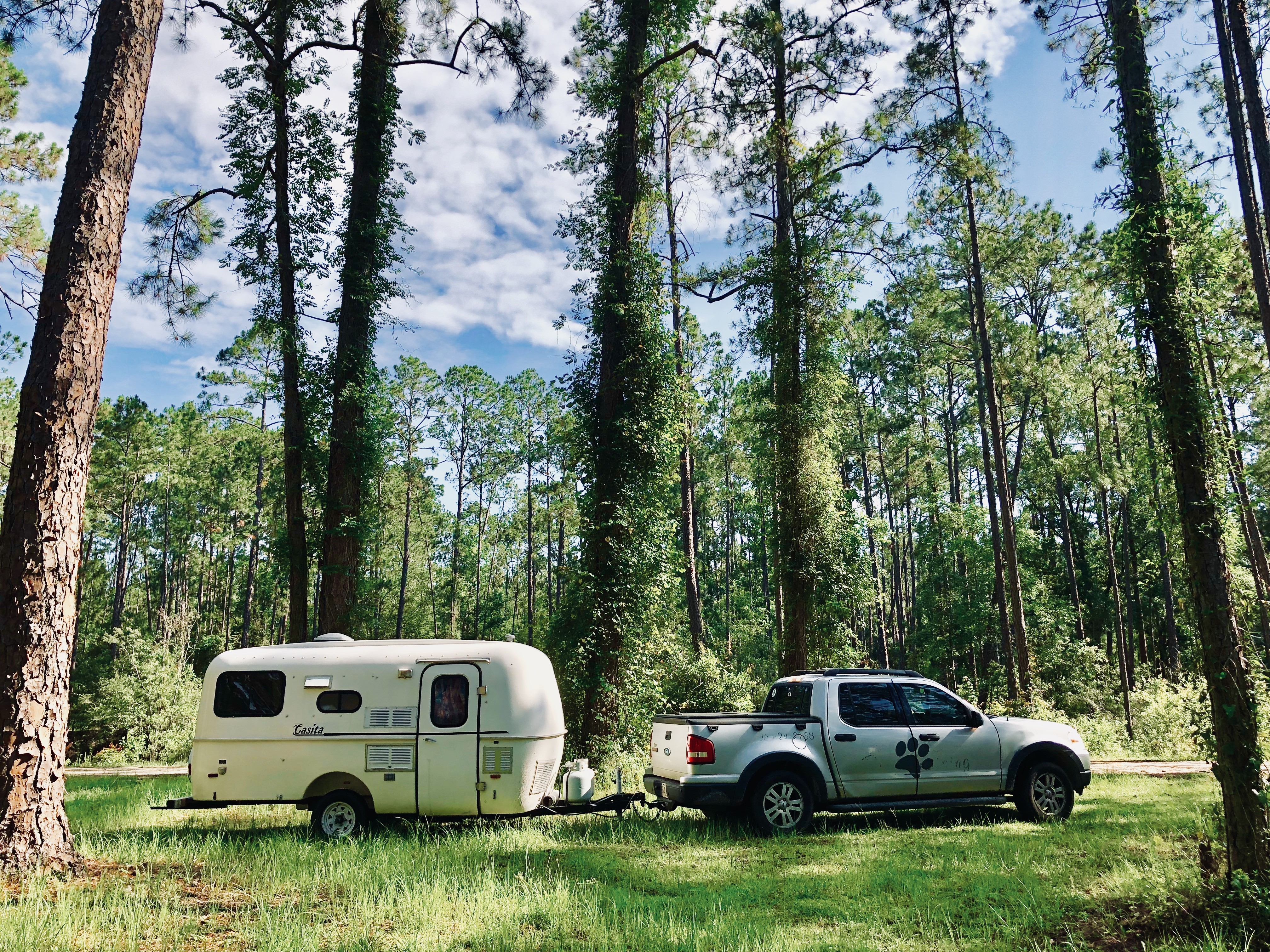 A woman standing in front of her Casita travel trailer in a scenic outdoor location.
A woman standing in front of her Casita travel trailer in a scenic outdoor location.
Why I Steered Clear of Other Camper Types
The Instagram-worthy allure of campervans often overshadows the realities of van life. Even spacious vans can feel cramped, and incorporating essential amenities like plumbing, running water, and a bathroom can involve complex and costly modifications. Critically, your vehicle is your house, meaning you have to drive your entire living space everywhere. For a working professional like myself, needing to detach my “house” from my “vehicle” for daily commutes, errands, and outdoor pursuits was non-negotiable. This immediately ruled out campervans and Class C RVs, which are essentially smaller, drivable RVs. The idea of my sole vehicle being the place I lived and drove was simply impractical. Class A RVs were dismissed even quicker – their sheer size and expense made them unsuitable from the start.
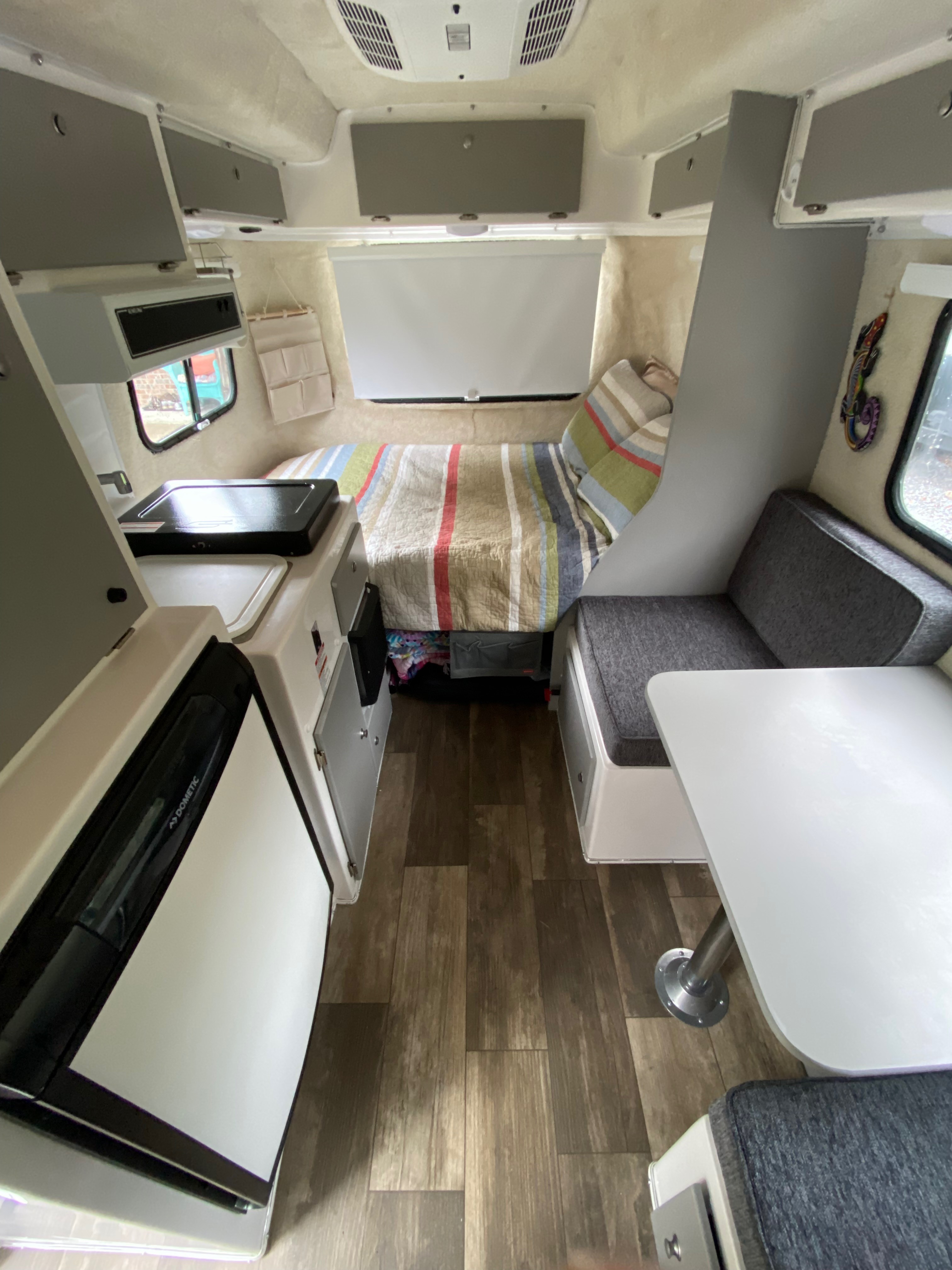 Exterior view of a Casita travel trailer parked in a campsite, showcasing its compact size and fiberglass shell.
Exterior view of a Casita travel trailer parked in a campsite, showcasing its compact size and fiberglass shell.
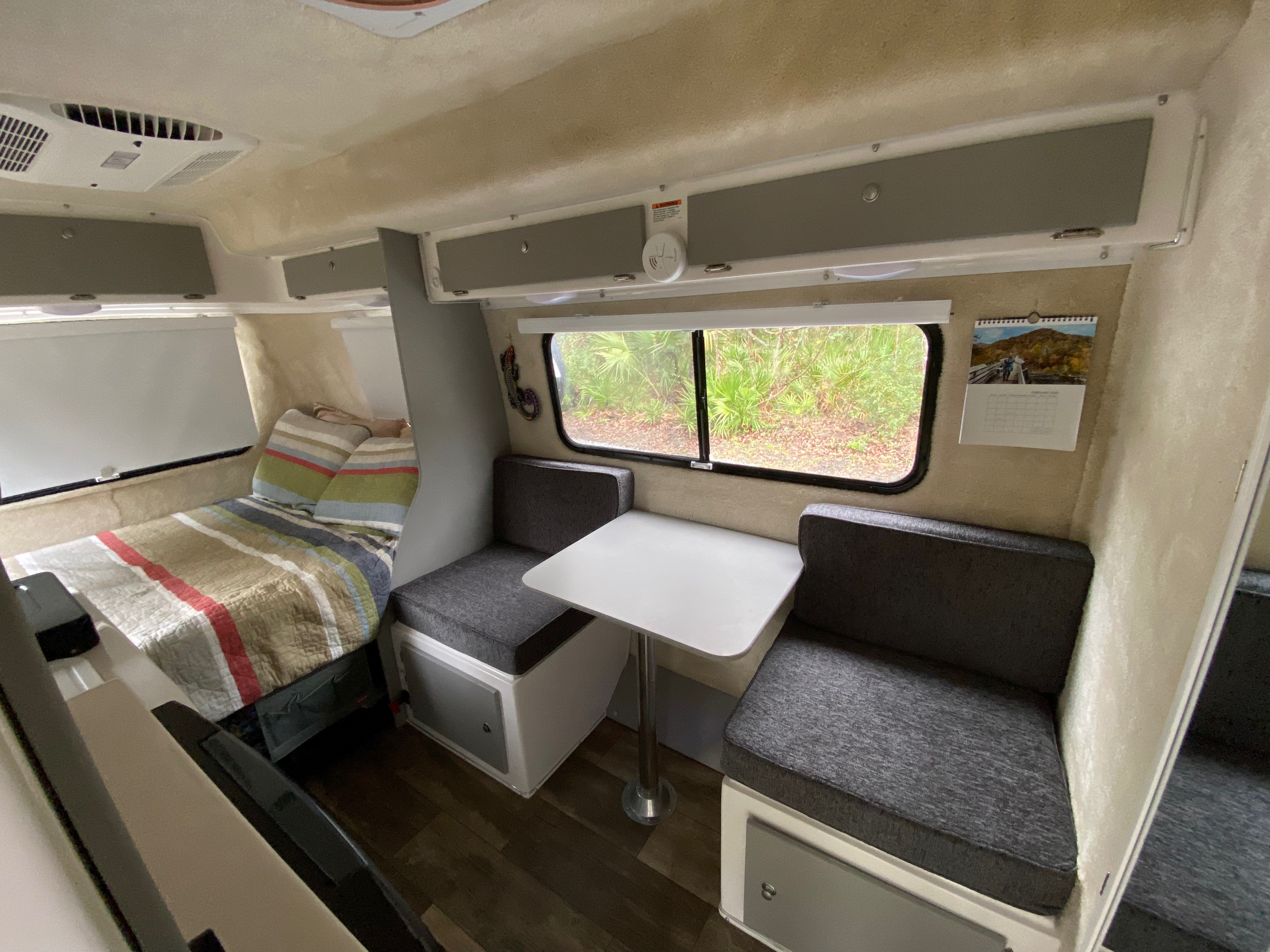 Interior of a Casita travel trailer, highlighting the dinette area and compact kitchen.
Interior of a Casita travel trailer, highlighting the dinette area and compact kitchen.
The Tow-Behind Travel Trailer Advantage: Why I Chose a TT
Travel trailers offer a unique and crucial advantage: detachment. Because my work takes me “outside the home” (I work at a hospital), the ability to leave my “home” behind while I drive to work is essential. My dog stays in the camper during work hours, requiring the air conditioning and refrigerator to run. Maintaining continuous power, water, and sewer hookups at my location is also vital. My full-time travel work often involves extended stays in one location, typically around three months. I’m not constantly moving, and I don’t work remotely, making the travel trailer setup ideal.
Furthermore, many of the remote trailheads and campsites I love are inaccessible to campervans and Class C RVs. My Toyota 4Runner, however, is built for such terrain, and I knew a Casita travel trailer could be made just as off-road capable as needed. The goal was always to park my “house” and then explore – hike trails, kayak on lakes, go rafting, or off-road – without being limited by my living space vehicle. A tow-behind travel trailer perfectly met these needs, allowing me to drive my 4×4 and bring my home along for every adventure.
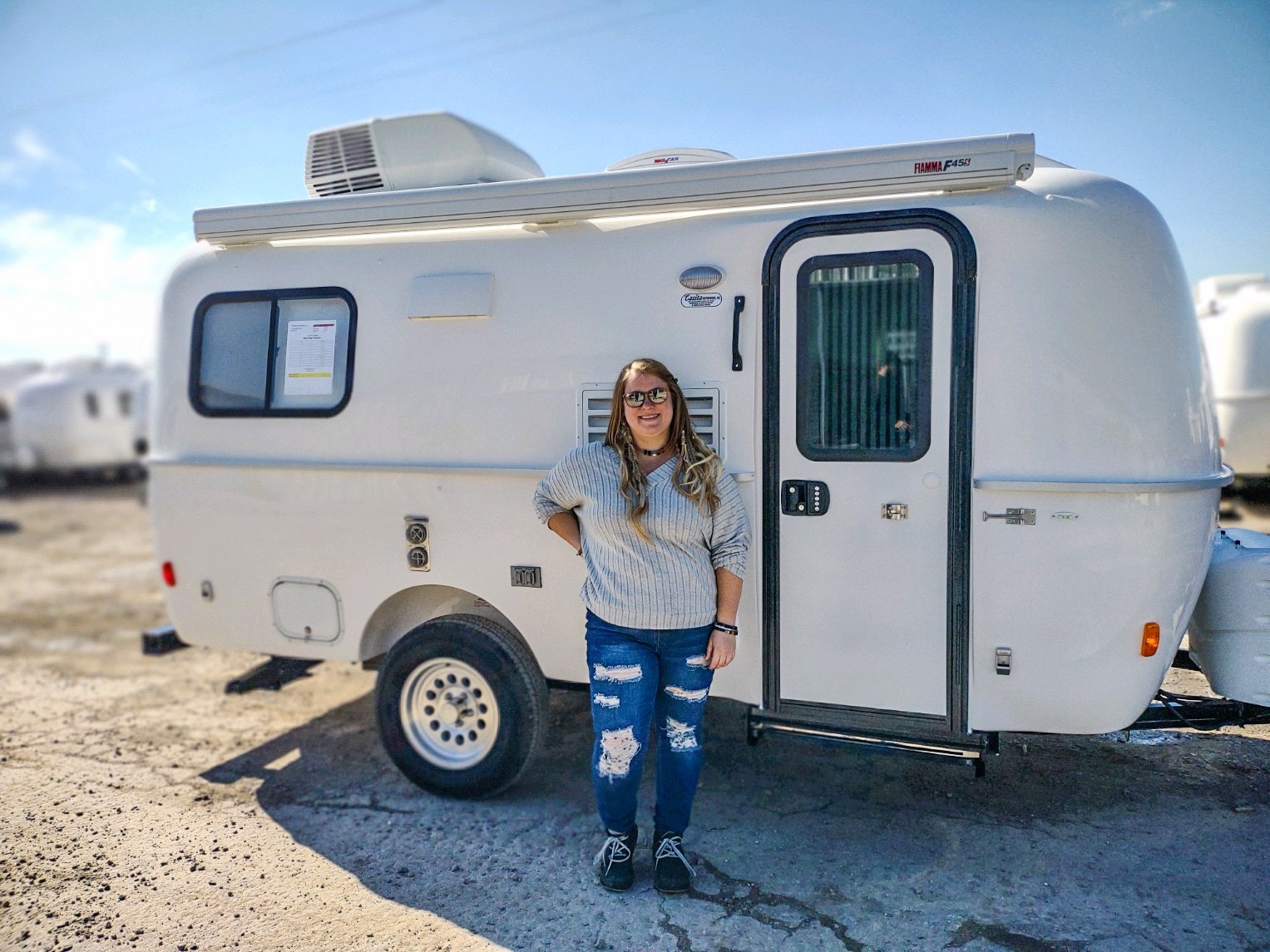 A Toyota 4Runner towing a Casita travel trailer on a scenic road, emphasizing the towability and compact nature of the Casita.
A Toyota 4Runner towing a Casita travel trailer on a scenic road, emphasizing the towability and compact nature of the Casita.
The Casita Appeal: Why This Fiberglass Trailer Won Me Over
Six years ago, fresh off the Appalachian Trail and searching for a travel trailer, I dedicated weeks to intensive research. With a limited budget, I wanted to ensure my purchase was the right one. Looking back, I realize there were aspects I overlooked, and perhaps that initial vintage trailer wasn’t the ideal choice due to undisclosed issues. However, my conviction in the Casita brand remained unshaken. Through the process of gutting and renovating my “Margarita” Casita, I gained invaluable knowledge about camper living, maintenance, and the inner workings of these charming fiberglass “eggs.” Here’s why fiberglass trailers, and Casita specifically, are in a class of their own.
Virtually Leak-Proof Design
Fiberglass trailers like Casita are renowned for their exceptional leak resistance. Their construction, resembling two inverted fiberglass boat hulls sealed together, eliminates seams and joints, the typical culprits for leaks in other trailers. Any leaks that do occur usually stem from easily addressed issues like dry-rotted window seals, loose connections, or plumbing problems, not structural failures. My previous thirty-year-old Casita remained leak-free, and I expect similar longevity from my new one.
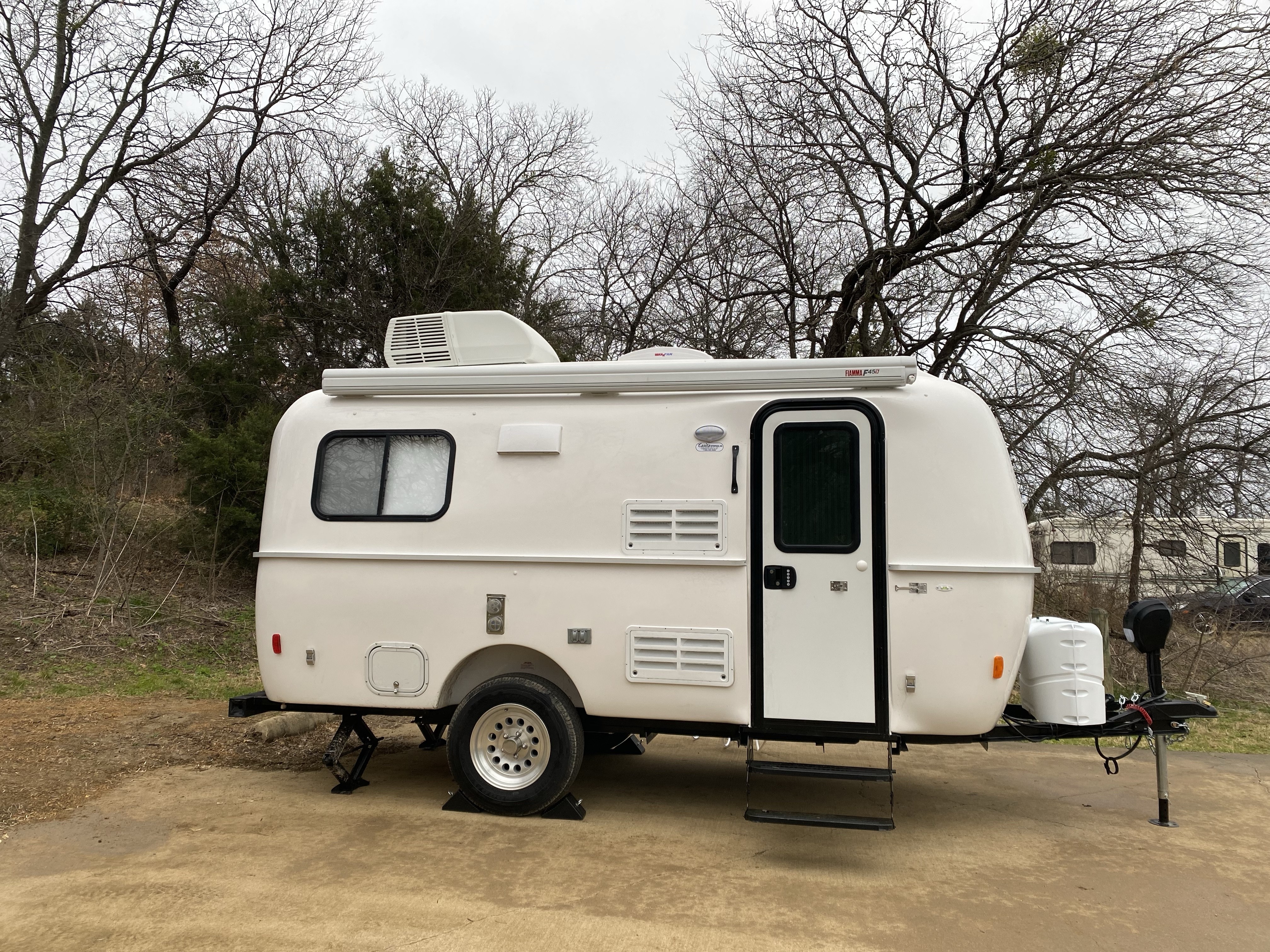 Close-up of the fiberglass shell of a Casita travel trailer, highlighting its seamless construction and durability.
Close-up of the fiberglass shell of a Casita travel trailer, highlighting its seamless construction and durability.
Towable by Almost Anything, Anywhere
Current Casita models are 17 feet long and weigh between 2200-3000 lbs, depending on the specific model and options. Older, lighter 13ft and 16ft models are also occasionally available on the used market. This weight range makes them compatible with a wide variety of tow vehicles, improving fuel efficiency while towing. With optional upgrades like a high-lift axle, shock kit, and larger tires (which I opted for), Casitas can confidently handle bumpy dirt roads for off-grid adventures and fit into smaller, more secluded campsites inaccessible to larger trailers and RVs. Their off-road capability surpasses most campervans, and they are easily towed by vehicles like my 4Runner.
Reasonable Price and Market Resilience
Despite current demand significantly exceeding supply – Casitas are produced in a single, small facility in rural Texas, leading to wait times of 13-18 months – their price point remains remarkably reasonable. They are priced similarly to, or even below, comparable-sized traditional trailers, and are considerably more affordable than some other fiberglass trailer brands. Remarkably, Casita travel trailers often appreciate in value the moment they leave the factory lot, unlike most recreational vehicles that depreciate immediately. This is largely due to the supply-demand imbalance; buyers are willing to pay a premium to avoid the lengthy wait.
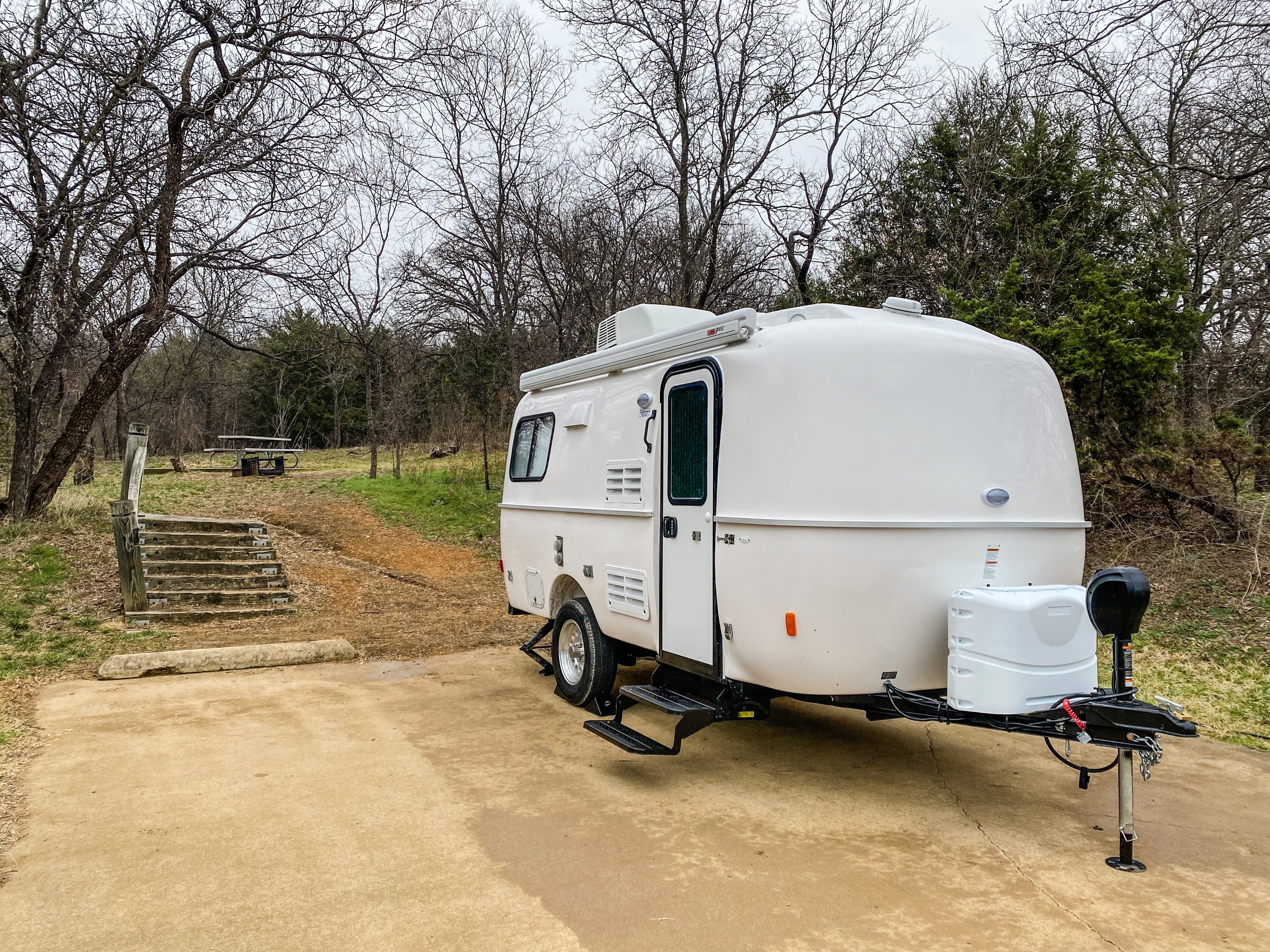 A row of new Casita travel trailers at the factory, showcasing their consistent design and build quality.
A row of new Casita travel trailers at the factory, showcasing their consistent design and build quality.
Undeniably Cute Aesthetic
Casitas are simply adorable! Their rounded, egg-like shape is instantly appealing. For someone like me, who has always admired the design of Airstreams but found them financially and practically out of reach (requiring a larger tow vehicle), the Casita offers a perfect compromise. It captures the same streamlined, rounded aesthetic without the weight or exorbitant price tag. Casitas are also highly customizable; the white fiberglass exterior can be painted or wrapped for a personalized look. I plan to add custom graphics to mine eventually, but even in its “naked” state, without the factory logos (which I opted to remove for a cleaner, more modern look), it’s perfect.
What’s Not to Love About a Casita?
For solo travelers or couples, the downsides of a Casita are minimal. The bathroom is compact, which might be challenging for taller individuals to stand upright in. The popular Spirit model features a sideways bed configuration that requires one person to climb over the other if sharing. However, as a solo traveler standing at 5’3″, these aspects are perfectly manageable for me!
It’s worth noting that Casita isn’t the only fiberglass trailer manufacturer. Major US competitors include Scamp and Oliver, and vintage options from Boler, Uhaul, Trillium, and others exist. Scamp is Casita’s closest competitor, offering similar trailers at comparable prices. While Scamp offers slightly different layouts, my preference for the Casita Spirit layout was a key deciding factor.
Oliver Travel Trailers represent the luxury end of fiberglass campers. They are larger (19ft or 24ft), often feature double axles, and boast higher-end finishes and appliances. While undeniably nicer than Casitas, they are also twice as expensive and considerably heavier, impacting versatility.
Essential Tips for Buying a Casita:
- Know Your Tow Vehicle: Thoroughly research your vehicle’s towing capacity to ensure it can safely tow AND stop a trailer weighing around 3000 lbs.
- Take a Casita Tour: Contact Casita to connect with a local owner and arrange a tour. This firsthand experience will confirm if the space feels adequate and if the height works for you.
- Join Casita Communities: Engage with Casita Facebook groups like Casita Owners of America and Casita Life. These online communities are treasure troves of information and owner experiences.
- Attend a Fiberglass Trailer Rally: For serious buyers, fiberglass trailer rallies across the US offer the chance to tour various trailer types and make an informed decision.
- Place Your Deposit Early: Once you’re set on a Casita, secure your spot in line by placing a deposit, even if you haven’t finalized your options. Wait times can range from a year to eighteen months!
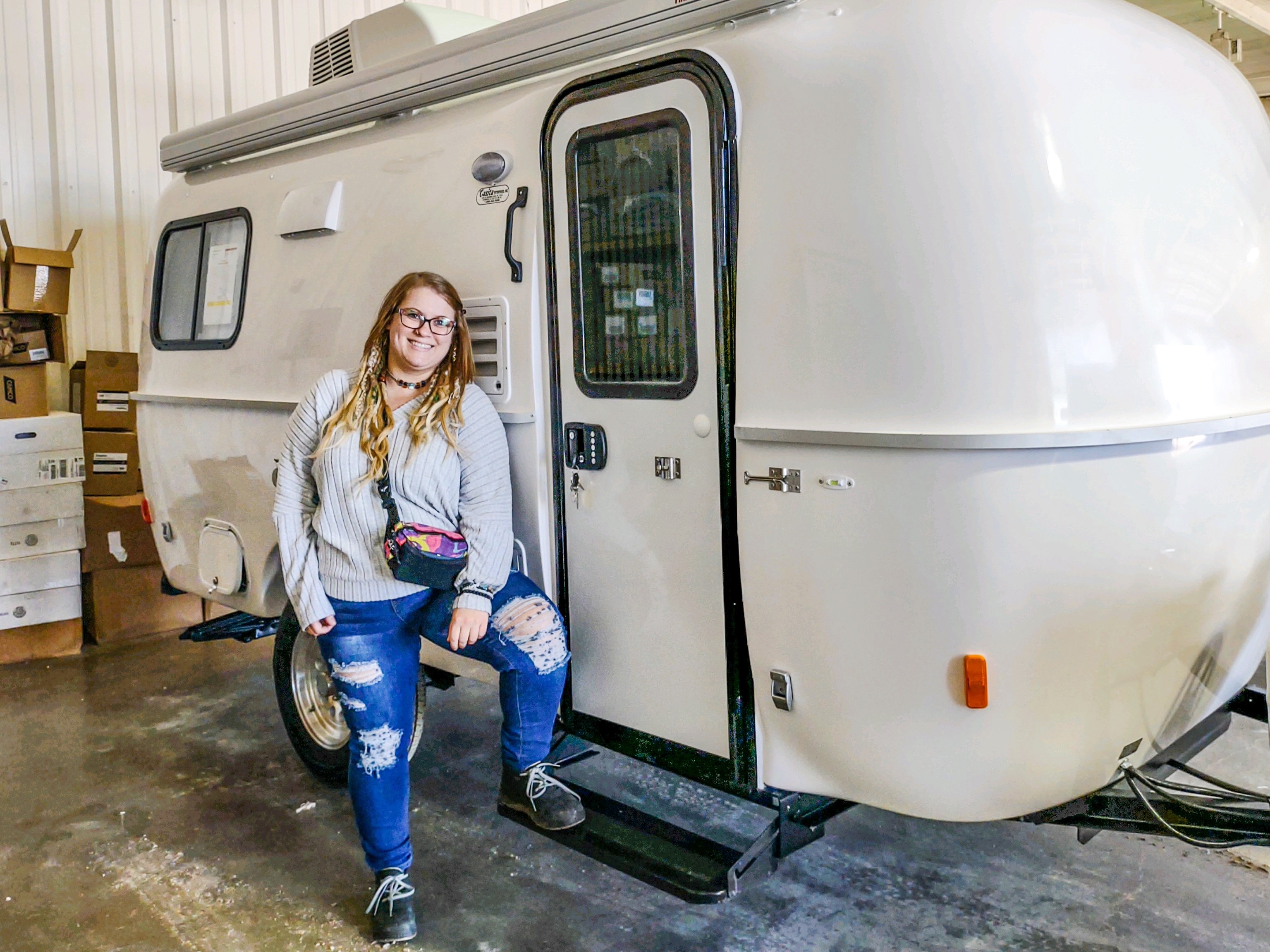 A woman smiling and holding keys in front of her new Casita travel trailer, celebrating her purchase.
A woman smiling and holding keys in front of her new Casita travel trailer, celebrating her purchase.
My Chosen Casita Options:
Factory Options:
- Furnace (propane powered; a feature missing in my previous Casita)
- Outside Shower (perfect for rinsing off my dog and muddy gear)
- Microwave
- LED Interior Bulbs
- Aluminum Alloy Wheels
- Solar Port
- Deep Cycle AGM Battery
- Electric Tongue Jack (a game-changer for ease of use)
- Roller shades (preferred over blinds for better light blocking and dog-proofing)
- Leveling Blocks Set (convenience over cost, especially when traveling from Florida to Texas with limited truck space)
- Folding Shelf (note: usability is limited with non-factory mattress setups)
- Surge Protector (again, convenience-driven purchase)
- Casita Kit (essential roadside tool kit)
- High Lift Suspension Package
- Awning
- 180 W Solar Panel
- Anderson weight distribution hitch
Aftermarket Options from Little Home on the Road:
- Shock kit
- Katy Closet (custom storage solution)
- Toilet shut-off valve
- Double step (primarily for my aging dog’s comfort)
I had also planned for a Stromberg Carlson rack, mounted over the propane tanks for generator or storage bin transport. Unfortunately, it didn’t arrive in time for installation. A slide-out battery tray is also on my future upgrade list.
The Casita Verdict: Why It’s My Perfect Choice
This details my journey to choosing a Casita and my decision-making process regarding options. The total cost, including all factory and aftermarket options, came to $32,300. Considering average monthly costs of $1000-2000 for short-term rentals like AirBNBs or furnished finders, and $400-700 for monthly campground fees, I anticipate this Casita travel trailer paying for itself within 2-3 years through housing cost savings alone. Beyond the financial benefits, I now have a comfortable and familiar “home” on wheels, perfectly tailored for me and my dog, ready for adventures anywhere.
Have questions? Leave a comment below or reach out via the contact form.
Share this:
Like Loading…